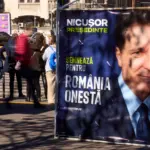Long before ‘personal branding’ or ‘resilience’ became buzzwords, Ralph Waldo Emerson wrote a quiet manifesto on how to live with purpose. Self-Reliance, published in 1841, is a meditation on looking at yourself—not in a shallow, self-affirming way, but in the deepest possible sense.
“Trust thyself,” he wrote. “Every heart vibrates to that iron string.” His words and those of his fellow Transcendentalist Henry David Thoreau’s—”Go confidently in the direction of your dreams. Live the life you have imagined”—have stayed with me since I first read them a quarter of a century ago.
In a world that constantly pushes us to follow, fit in, or keep up, this still lands like a challenge.
Reinvention today is often talked about as a response to external forces—disruption, crisis, opportunity. But real reinvention doesn’t begin with trends or strategy decks. It begins with inner permission. With the decision to trust your own instincts—even when they diverge from the script others expect you to follow.
This is where Emerson and reinvention meet. Because reinvention is, at its core, an act of self-trust.
You leave a job not because someone told you to—but because it no longer fits.
You start something new not because the world is ready—but because you are.
You step away from certainty not because it’s fashionable—but because comfort and growth rarely coexist.
And yet, the hardest part of reinvention is rarely the change itself. It’s the quiet pressure to conform.
Uncomfortable questions
We’re conditioned to second-guess ourselves. To seek consensus. To not deviate too far from who we’ve been. Reinvention challenges that conditioning. It requires you to back yourself before anyone else does.
Emerson warned of the same thing: “A foolish consistency is the hobgoblin of little minds.” What he meant was this—don’t become a prisoner to your past just to avoid surprising others.
For many, that expectation becomes a cage. Not because it’s true, but because it’s familiar. Reinvention asks: Who are you when you stop trying to be who you’ve always been?
That question is uncomfortable. It cuts through habit and identity. But it’s also the beginning of freedom.
Emerson didn’t write about reinvention in those terms. But Self-Reliance is a guide for anyone standing at the edge of change. It urges you to build a life that isn’t shaped by echo or imitation—but by original thought, by intuition, by the conviction that your own path is valid, even if it’s not widely travelled.
“There is a time in every man’s education,” Emerson writes, “when he arrives at the conviction that envy is ignorance; that imitation is suicide… that though the wide universe is full of good, no kernel of nourishing corn can come to him but through his toil.”
That’s the call. Not to change for the sake of it—but to create something authentic.
Reinvention isn’t about becoming someone new. It’s about becoming more fully yourself—again and again.
And that begins, always, with the quiet decision to trust your own voice—before the world does.
Photo: Dreamstime.







